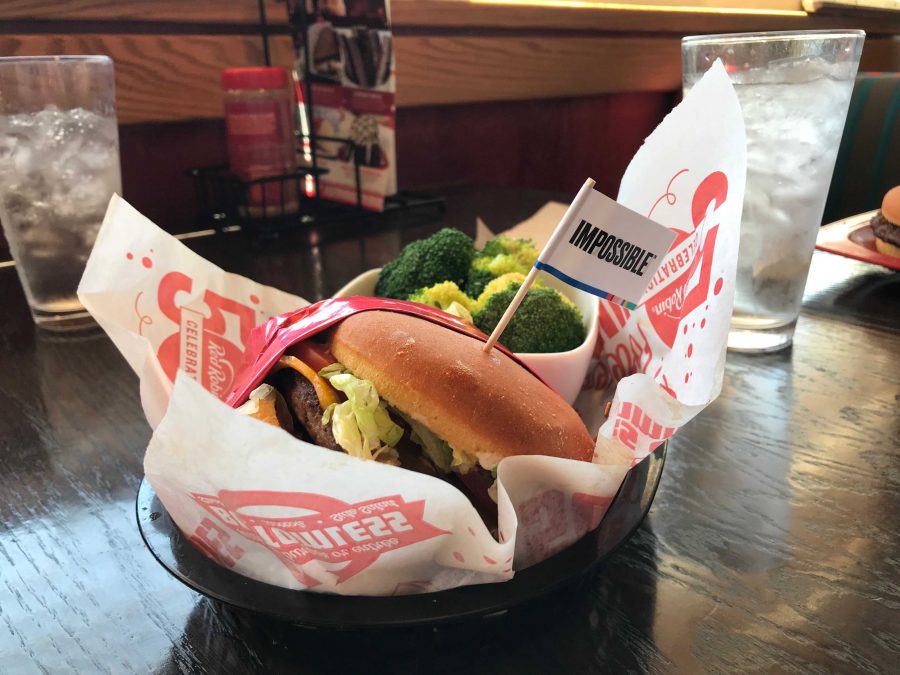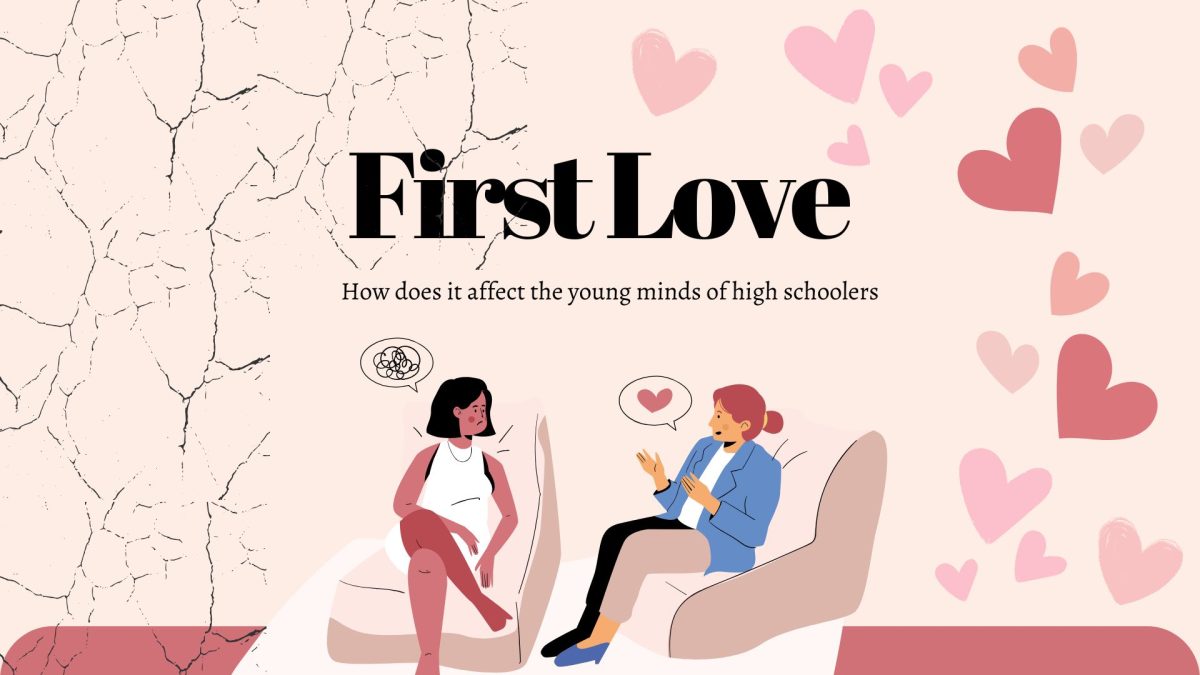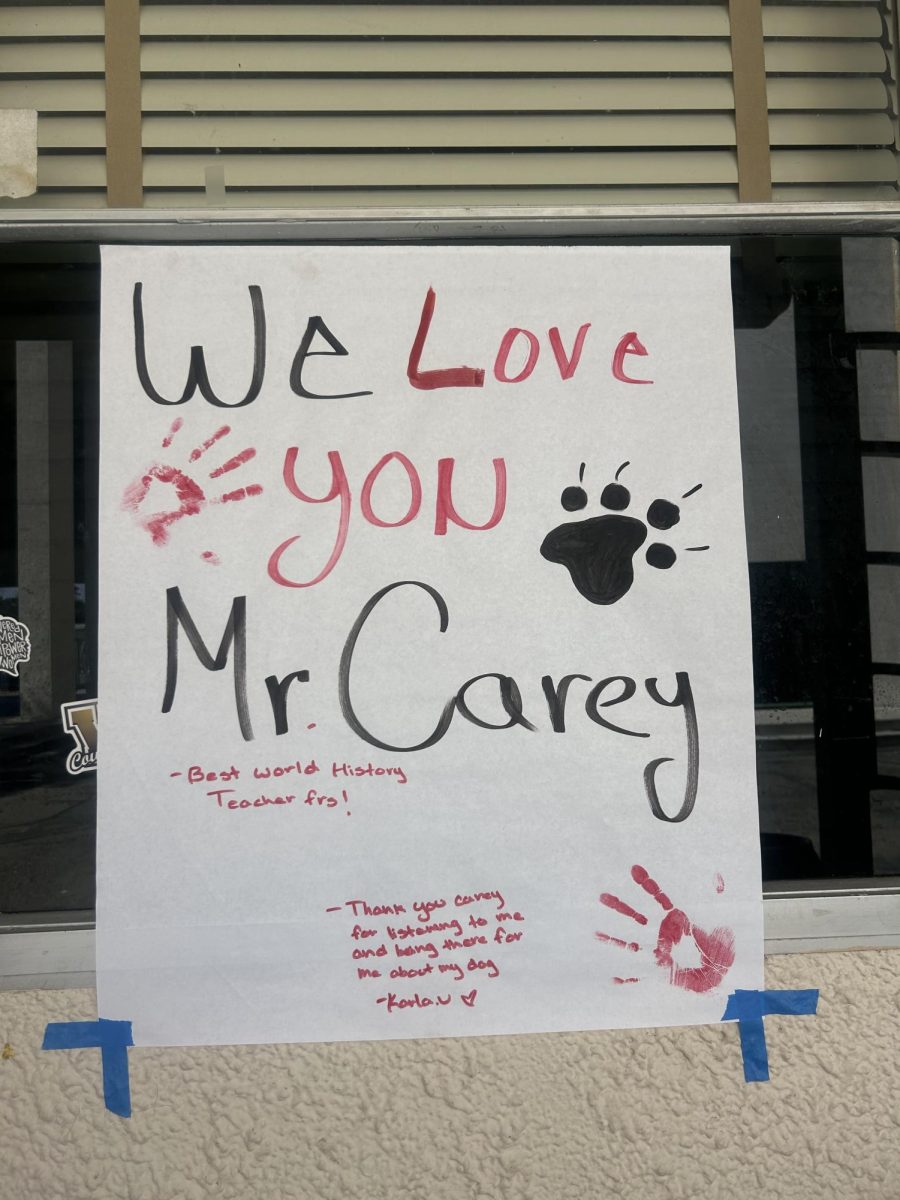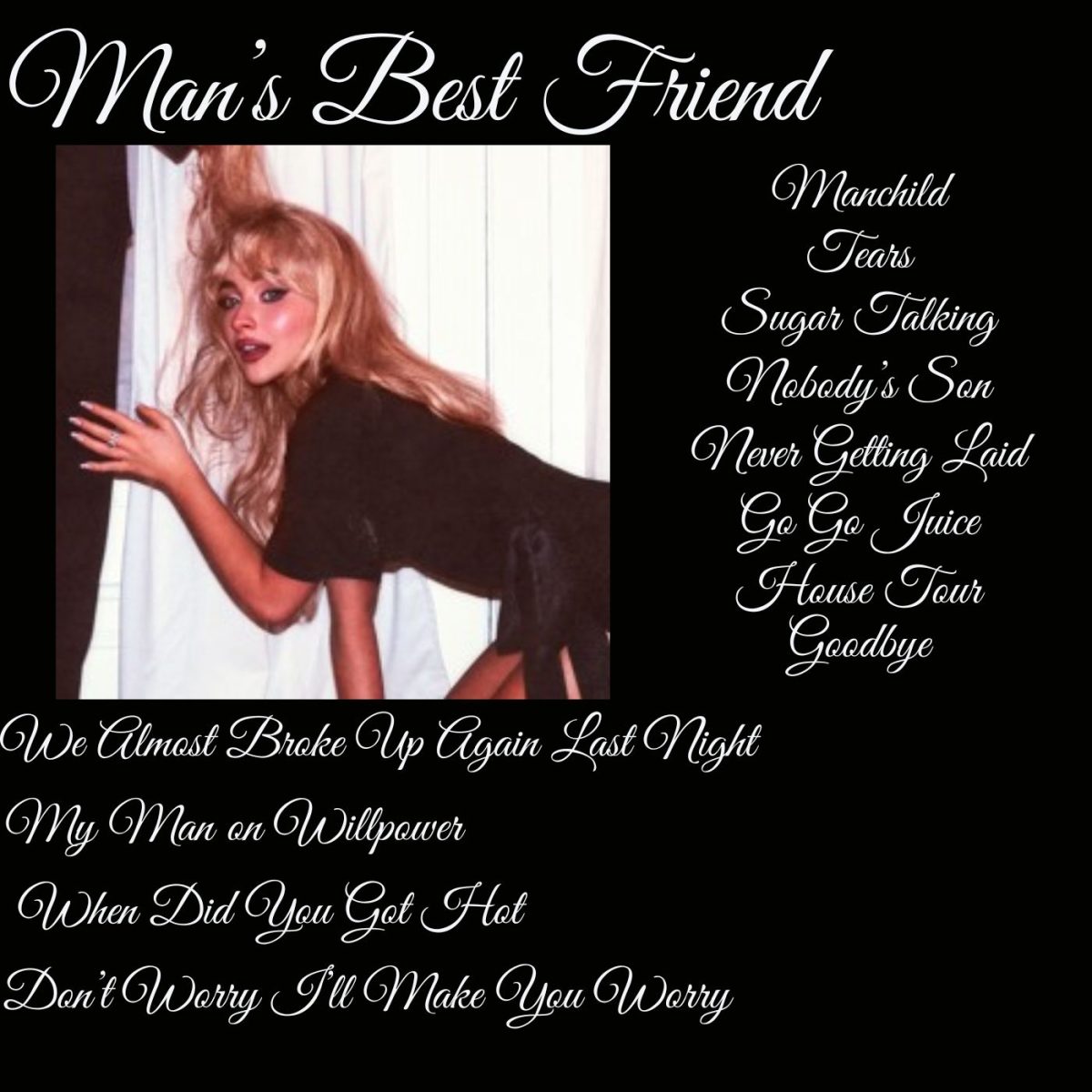Two weeks ago, I met with a couple friends at Red Robin to try the non-meat Impossible Burger. The Impossible Burger is a piece of the juiciest news in both food and business (more on why it is in a moment), but honestly, I was just excited to bite into a real, American burger. Even if it wasn’t actually meat.
I became a pescetarian (I don’t eat meat, but I still eat fish) as a kid after watching, “Food, Inc.,” a documentary about how animals are treated in the American food industry. I was appalled by what I saw and I decided that I didn’t want to endorse an industry whose general treatment of animals I personally opposed.
So, long story short, no more In-N-Out burgers for me. I’ve occasionally questioned my decision to swear off meat, but I maintain my belief the American food industry doesn’t treat animals with the dignity they deserve, and that not eating meat is the best way for me personally to demonstrate that opposition. Still, I occasionally pine for a guilt-free burger when I go to In-N-Out with friends after a concert (a gluten-free bun wouldn’t hurt, either, as an involuntarily gluten free individual).
Enter the Impossible Burger: created by Patrick Brown, a former Stanford Medical professor of biochemistry and an investigator at the Howard Hughes Medical Institute who was concerned about beef’s environmental consequences for worsening climate change, the Impossible Burger is supposed to be the burger that meat-eaters would willingly eat.
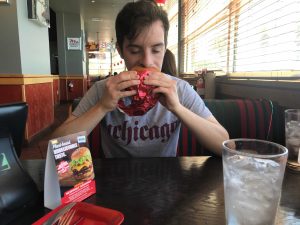
The company behind the Impossible Burger, Impossible Foods, has an entire page on their website dedicated to its mission: “to save meat. And Earth.”
“Animal agriculture occupies almost half the land on earth, consumes a quarter of our freshwater and destroys our ecosystems,” reads the website.
“So we’re doing something about it: we’re making meat using plants, so that we never have to use animals again. That way, we can eat all the meat we want, for as long as we want. And save the best planet in the known universe.”
Brown details the scientific basis for the Impossible Burger in a Medium article that you can read here. I won’t go into all the details, but basically, the secret is a molecule called heme that “is primarily responsible for generating the unmistakable, craveable flavor and aroma of cooked meat.”
We tested many heme proteins from many plants,” wrote Brown. “One of them was leghemoglobin, found in the roots of legumes, where it helps them extract nitrogen from the air to enrich the soil. When we mixed leghemoglobin with plant proteins, fats and other simple nutrients, it transformed what would otherwise have been a dull tasting veggie burger into…meat! And the meat cooked, smelled and tasted like meat from a cow.
So back to my side of the story. My friends – both omnivores – and I ordered cheeseburgers with the Impossible Burger substituted in for regular burgers. I also got a gluten-free bun. And… it was good! I honestly had no idea what to expect; I hadn’t eaten a burger in ages, so my expectation was largely based off of vegetarian burgers, which are an acquired taste when compared to a Big Mac. They’re not bad, but no one would mistake a beet burger with a hamburger.
That’s not the case with the Impossible Burger. It looked, felt, and tasted like a burger, with no discrepancies in consistency or anything. For me, it was a pretty great moment to finally realize my dream of a conscience-friendly burger.
Junior Asher Kim, who tried the Impossible Burger at Red Robin with me, added, “I thought it was just a burger that was expensive for what it tastes like, but if you have the money to spare, it is definitely worth buying if you want to cut down on your meat intake.”
My friends and I agreed that it wasn’t the greatest burger in the world, but, honestly, that’s the point.
It’s supposed to be a normal burger, not some superstar chef’s craft creation. It’s supposed to be a foot soldier in the battle against climate change, and it succeeds in that respect. It’s a good burger that someone wouldn’t think twice about ordering, and in that regard, it’s already won the battle to make a burger most people couldn’t tell from a beef patty. I know I’m going back for another one.
To find where the Impossible Burger is served in restaurants, use the search function on Impossible Foods’ website.



